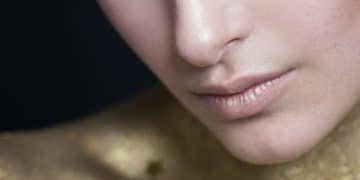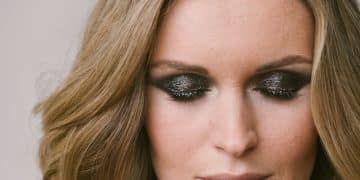Fix Your Look: 3 Common Makeup Mistakes & Easy Solutions
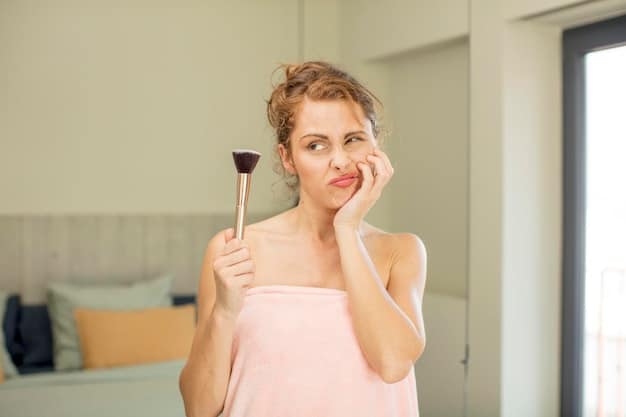
3 Common Makeup Mistakes and How to Fix Them involves recognizing errors like choosing the wrong foundation shade, over-applying blush, and neglecting to blend eyeshadow properly, then applying simple techniques such as shade-matching in natural light, using a light hand with blush, and blending eyeshadow with a fluffy brush for a flawless finish.
Are you unintentionally hindering your beauty potential? Many people make subtle errors in their makeup routine that can detract from their overall look. Let’s dive into 3 Common Makeup Mistakes and How to Fix Them, providing you with practical solutions for a flawless finish.
Common Foundation Faux Pas (and How to Find Your Perfect Match)
Foundation is the base of any great makeup look, but choosing the wrong formula or shade can wreck your makeup. Selecting an unflattering color and inconsistent finish are some of the biggest mistakes when applying foundation. Here is how to get it right.
Shade Mismatch: The Ultimate Foundation Sin
One of the most prevalent foundation mistakes is choosing a shade that doesn’t match your skin tone. Wearing a foundation that is too light can make you look washed out, while one that is too dark can create an unnatural, muddy appearance. The goal is to find a shade that seamlessly blends with your natural skin color.
How to Find Your Perfect Foundation Shade
- Test in Natural Light: Always test foundation shades in natural light. The artificial lighting in stores can distort the true color.
- Match to Your Jawline: Apply a small amount of foundation along your jawline. The shade that disappears is the closest match.
- Consider Undertones: Determine whether you have warm, cool, or neutral undertones. Warm undertones have a golden or yellow hue, cool undertones have a pink or blue hue, and neutral undertones have a balance of both. Choose a foundation that complements your undertones.
Finding the perfect foundation shade takes a little patience and experimentation. Don’t be afraid to mix shades together to create a custom blend that works for you. Once you find the right match, you’ll wonder why you ever settled for anything less.
The Blush Blunder: Avoiding Over-Application and Placement Issues
Blush can breathe life into your face, but it’s easy to go overboard. Incorrect placement or using too much product can make you look clownish. Here’s how to apply blush correctly to create a naturally flushed look.
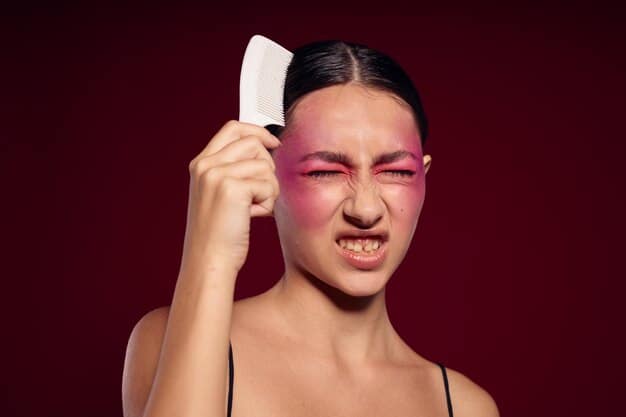
The “Clown Cheeks” Effect: Over-Applying Blush
Applying too much blush is a common mistake that can make your cheeks look unnatural and overdone. The key is to start with a small amount of product and build up gradually. When in doubt, less is more.
Strategic Placement: Where to Apply Blush
The placement of your blush can dramatically affect your overall look. Applying blush too close to your nose can make your face look wider, while applying it too low on your cheeks can drag your face down. The goal is to create a lifted, youthful appearance.
- Smile and Locate: Smile to find the apples of your cheeks. That’s the correct spot to get started.
- Blend Upwards: Gently blend the blush upwards towards your temples, following the natural curve of your cheekbones. This will lift your face and create a more defined look.
- Use a Light Hand: Dip your blush brush into the product then tap off the excess before applying it to your face. This will help prevent over-application.
With the proper placement and a light hand, blush can be your secret weapon for a radiant, healthy glow. Experiment with different shades and formulations to find what works best for your skin tone. Remember, the goal is to enhance your natural beauty, not mask it.
Eyeshadow Errors and Easy Blending Techniques
Eyeshadow can transform your eye makeup, but it requires a deft touch. Poor blending and selecting the wrong shades can lead to a messy, unpolished look. These are some common errors and advice on how to avoid them.
Harsh Lines and Patchy Color: The Unblended Eyeshadow Nightmare
One of the biggest eyeshadow mistakes is failing to blend the colors properly. Harsh lines and patchy color can make your eye makeup look amateurish. Blending is the key to creating a smooth, seamless transition between shades.
Choosing the Right Eyeshadow Brush
Investing in a quality set of eyeshadow brushes can make a world of difference in your blending skills. A fluffy blending brush is essential for achieving a soft, diffused look.
- Use a Fluffy Brush: Choose a blending brush with soft, flexible bristles. This will help you blend the eyeshadow without creating harsh lines.
- Work in Small Circles: Gently blend the eyeshadow in small, circular motions. This will help diffuse the colors and create a seamless transition.
- Take Your Time: Blending takes time and patience. Don’t rush the process. Keep blending until you achieve the desired effect.
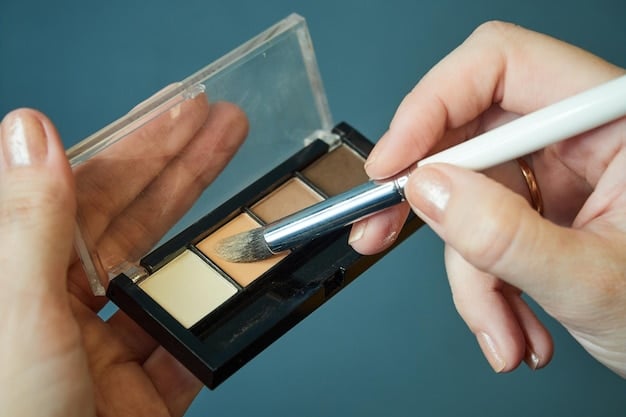
Mastering the art of eyeshadow blending takes practice, but it’s well worth the effort. With the proper tools and techniques, you can create a wide range of eye makeup looks that enhance your natural beauty. Avoid choosing the wrong colors and layering glitter for a finished look.
Ignoring Your Skin Type: Tailoring Makeup to Your Unique Needs
Not all makeup is created equal, and what works for one person may not work for another. Ignoring your skin type can lead to clogged pores, dryness, or an overall unflattering finish. It’s important to choose products that are specifically formulated for your skin’s needs. Here is how and why.
Oily Skin: Matte Formulas and Oil Control
If you have oily skin, opt for matte foundations, powders, and eyeshadows. These products will help control shine and prevent your makeup from sliding off your face throughout the day.
Dry Skin: Hydrating Formulas and Moisturizing Primers
If you have dry skin, look for hydrating foundations, moisturizers, and creamy eyeshadows. These products will help keep your skin hydrated and prevent your makeup from looking cakey or flaky.
Understanding your skin type is the key to choosing makeup that will enhance your natural beauty and keep your skin healthy. Take the time to assess your skin’s needs and select products that are specifically formulated for your skin type. With the right makeup, you can achieve a flawless, radiant complexion.
Forgetting Primer: The Foundation of Long-Lasting Makeup
Primer is like the unsung hero of makeup. It creates a smooth canvas for your foundation, allowing it to glide on evenly and last longer. Skipping primer can lead to uneven coverage, creasing, and a short-lived makeup look. Here’s why you need it.
The Benefits of Primer
- Smooths Skin Texture: Primer fills in fine lines and pores, creating a smooth canvas for your foundation.
- Extends Makeup Wear: Primer helps grip your foundation, extending its wear time and preventing it from fading or creasing.
- Controls Oil: Some primers are specifically formulated to control oil and shine, making them ideal for oily skin types.
Adding primer to your makeup routine is a simple yet effective way to improve the overall look and longevity of your makeup. Experiment with different primers to find one that works best for your skin type and concerns. Once you incorporate primer into your routine, you’ll wonder how you ever lived without it.
Neglecting Your Tools: Keeping Brushes Clean and Replacing Old Products
Your makeup brushes and sponges can harbor bacteria, which can lead to breakouts and skin irritation. Additionally, using old or expired makeup products can also cause skin problems. Proper hygiene is essential for maintaining healthy, clear skin. It also enhances the application.
Cleaning Your Brushes Regularly
Make it a habit to clean your makeup brushes at least once a week. Use a gentle brush cleanser or mild soap and water to remove makeup residue and bacteria. Rinse thoroughly and allow your brushes to air dry.
Taking care of your makeup tools is an investment in your skin’s health and the overall quality of your makeup application. Make it a part of your regular beauty routine, and your skin will thank you for it. Plus, avoid these mistakes to make sure your makeup never looks messy.
| Key Point | Brief Description |
|---|---|
| 🎨 Foundation Shade Matching | Test shades in natural light along your jawline for the best match. |
| 😊 Blush Placement | Apply blush to the apples of your cheeks, blending upwards towards your temples. |
| ✨ Eyeshadow Blending | Use a fluffy blending brush in small circles for a seamless transition between shades. |
| 🧽 Brush Cleaning | Clean your brushes weekly to prevent breakouts and ensure a smooth application. |
Frequently Asked Questions (FAQ)
▼
Look at the veins on your wrist in natural light. Blue or purple veins indicate cool undertones, green veins suggest warm undertones, and a mix of both indicates neutral undertones. Another method is to see how your skin reacts to gold or silver jewelry. Does gold or silver look better on your skin?
▼
Yes, mixing different foundation shades is perfectly acceptable and often necessary to achieve your perfect match! Use a clean palette or the back of your hand to mix small amounts of each shade until you achieve the desired color. Be sure to test this new color on your jawline.
▼
Replace your makeup brushes every three months, or yearly–depending on the quality, use, and how frequently you wash them. If bristles fraying, shedding excessively, or no longer hold their shape, it’s time to replace them. Regularly cleaning also affects their longevity—clean weekly to ensure healthy skin.
▼
To prevent eyeshadow from creasing, start with an eyeshadow primer to create a smooth base and enhance the color’s longevity. After applying eyeshadow, set it with a light dusting of translucent powder to absorb excess oil and prevent creasing throughout the day.
▼
For fair skin, opt for light pink or peach shades to add a subtle flush. Medium skin tones can wear rose, mauve, or deeper peach colors. For deeper skin tones, try berry, coral, or brick red shades to add warmth without looking ashy.
Conclusion
By avoiding these common makeup mistakes and incorporating our suggested solutions, you can elevate your beauty routine and achieve a flawless, radiant look every time. Remember, practice makes perfect, so don’t be afraid to experiment and find what works best for you.




